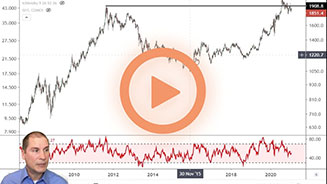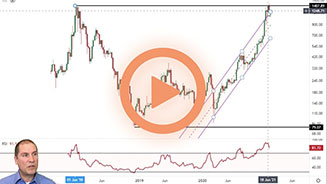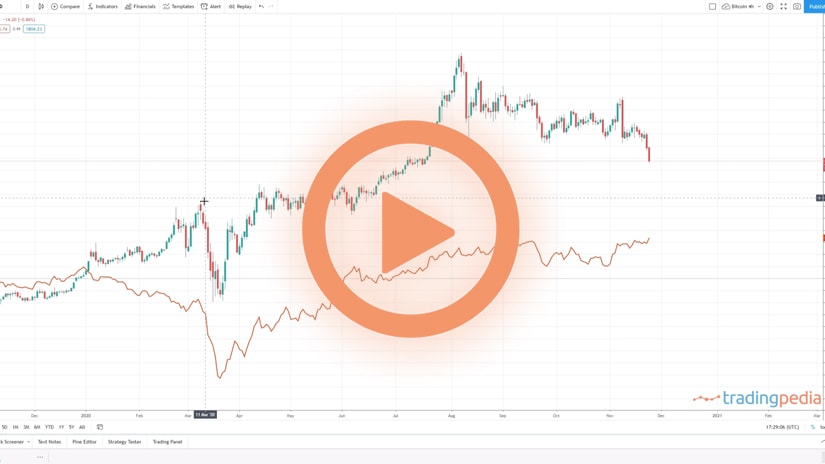
Hello and welcome to TradingPedia.com. In this video, we want to talk about how UBI (Universal Basic Income) might affect the markets. Now there’s two sides to the coin. Universal Basic Income is basically each of the citizens receiving a certain amount, let’s say it’s a thousand dollars, on a monthly basis. They receive that every month from the government.
Overview
And there are some smaller studies that have shown or some areas where this has been conducted and has proven to help the local economy. A lot of proponents of Universal Basic Income are looking to those studies.
For example, 40 years ago in Manitoba, Canada what they found out is that hospital visits decreased, that people were more productive within their work or just the economy in general was more productive. Some reasons for that might be by having that basic support coming in every month, there’s less stress and having to worry about the next job or being able to buy the next meal and a place to stay.
So the thought is that Universal Basic Income takes care of some of those basic needs to help alleviate that stress so that people can go out and live a more productive life. Their health is just improved because they don’t have that additional stress.
I guess the negative side to it is that people might believe that it would help increase inflation because everybody would receive this, let’s say, thousand dollars; that basically the cost of that additional demand would get passed back to the consumer and so the cost of all the things that they’re buying would basically go up the equivalent of what their income has gone up by that thousand dollars. This would create inflation is the thought.
How UBI Affect the Markets
So how might this affect the markets? Well, we don’t have a widespread study done on a developed economy like the United States of 350 million people, so it’s a big question how it might affect the markets. But what we do know is that the United States and the Fed have done a poor job in the past of trying to create inflation domestically in the United States.
If we go back and if we take a look at the 2008/2009 financial crisis, they tried to create inflation at that time. In essence, what happened is that it was exported to other emerging economies like Mexico, like South Africa. So perhaps, we can take a clue from this.
Maybe inflation and demand for the USD might not necessarily increase as a result of the UBI, but perhaps we might see some increased demand on some of these emerging economies via the MXN and ZAR, possibly even the AUD because they [Australia] are a commodity-rich nation.
Charts
Let’s take a look at some of the charts here. Here we’re taking a look at the AUD. One thing that I know with years we’ve got this price channel and this price channel is connecting some of these previous highs up here. We also are connecting these swing lows.
And right now we’re in the middle of this channel and it’s working itself up towards the top sides. I wouldn’t be surprised if we came up and tested some of these resistance zones. What’s really interesting about the AUD is how we’ve got a couple of instances where prices are respecting this midline. So this is an important channel to keep an eye out for.
Perhaps prices will run into some resistance here in the near future. It could be this horizontal resistance. It kind of depends on how long it takes to get up there but maybe there’s some horizontal resistance. I wouldn’t be surprised if the AUD does something like this where maybe it comes up here, tests this high, softens a little bit but then after softening here, maybe it starts to work itself higher from there.
Let’s also go out and take a look at the MXN as a possible reflation trade. In this instance, if the MXN is getting stronger, this exchange rate would move lower. It’s a little more advanced than what we saw with the AUD because prices are already down here, pushing this low trend line that goes back to 2013.
So again, we might see a little bit of a bounce higher and then from there, we might break on through and work ourselves lower. Also, if you do decide to go ahead and trade in any of these emerging economies, generally what you’re going to find are some wider spreads on the market and that’s OK.
In the case of the USD/ZAR and the USD/MXN, you’re going to have a lower cost per pip. A wider spread isn’t costing you a whole lot more. It will cost you a little bit more but it is not as much as it seems when you see some of these 100-pip or 200-pip spreads because the cost per pip is much lower.
But here’s ZAR and we’ve got this little minor trend line that prices have broken through. It’s come up and it’s tested the underside of this. Here we might see prices begin to dance along this line and then maybe work itself down here to this upward sloping trend line, which is down near that 14 ½ mark.
So it’s possible that through a Universal Basic Income some of the beneficiaries of this could be your ZAR, could be your MXN, possibly even your AUD in that reflation trade type of opportunity.
Related Videos
Conclusion
So I hope you enjoyed this video and I wish you all the best of luck in your trading. We will talk to you soon. Take care. Bye now.





